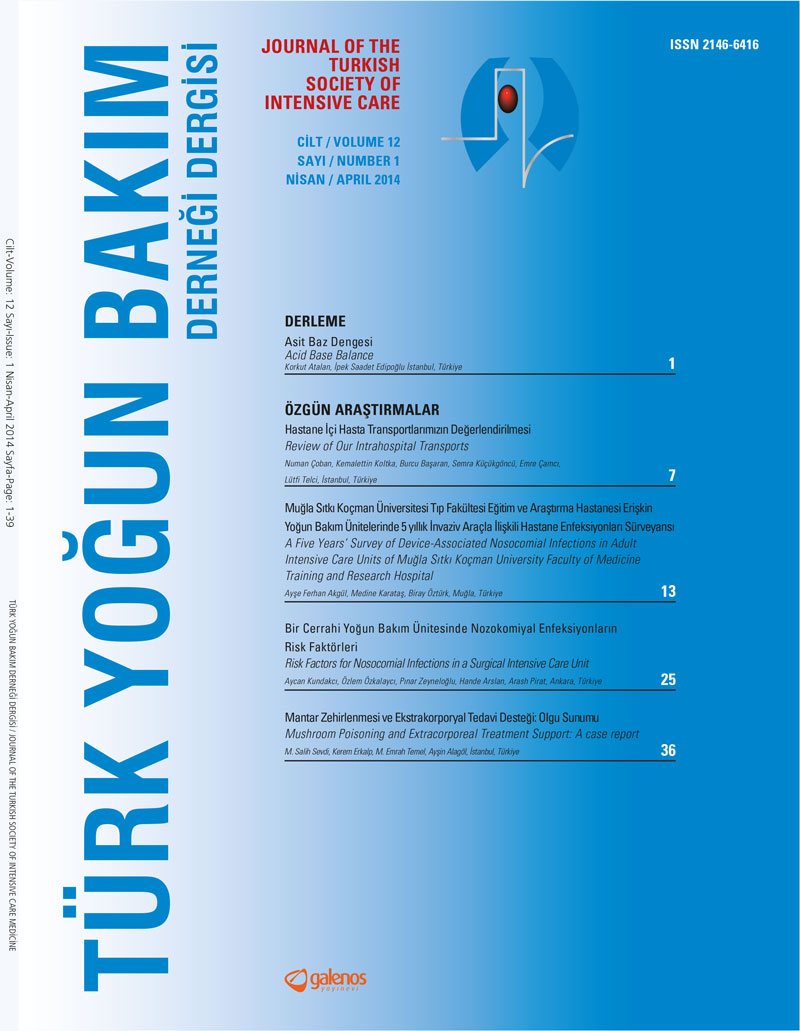Abstract
Objective:
High risk patients aretransferred to the intensive care unit (ICU). Patients in the ICU are often transferred to operating rooms and radiology units. Complication rates of critically ill patients during intrahospital transport ranges from 40% to 60%. This study was conducted to assess and detect the complication rates of the transport process.
Material and Method:
Transports performed between October 2011 and March 2012 were included. Filled forms were later evaluated.
Results:
Transport forms of 500 patients were evaluated. Two hundred ten patients had cardiovascular system complications (CVSC), while 10 had respiratory system complications (RSC). Forty patients encountered cardiovascular and respiratory complications. Two hundred forty patients had no complications. CVSC occurred more in patients >50 years of age and in patients having vasopressor support. RSC occurred more in patients who were transported from the ICU. Twenty arterial lines, 3 central venous catheters, 3 peripheral lines, and 2 intubation tubes were dislocated. There were 34 monitor related problems, 3 mobile ventilator related problems, and 11 oxygen cylinder related problems.
Conclusion:
CVSC was more frequent in elderly patients and patients with vasopressor support, while RSC was more present in patients who were transported from the ICU. Physicians need to be educated about the possible complications, methods to address them, and troubleshooting techniques that give priority to these complications. These methods and the use of sedoanalgesia may reduce the rates of complications.
Keywords: Critically ill patient, intrahospital transport, complications, complication rates
Copyright and license
Copyright © 2014 The Author(s). This is an open access article distributed under the Creative Commons Attribution License (CC BY), which permits unrestricted use, distribution, and reproduction in any medium or format, provided the original work is properly cited.





















